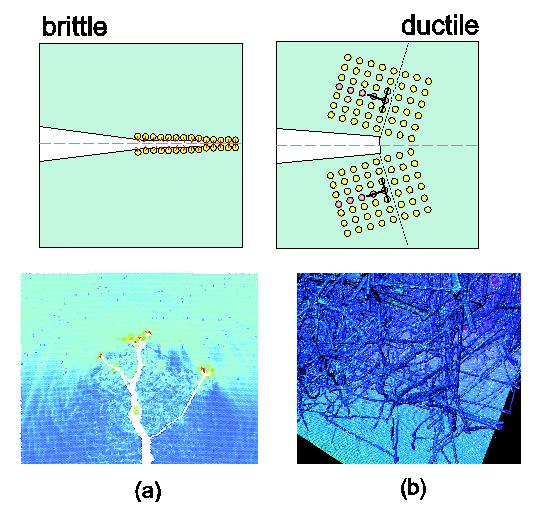Lecture 1:
Introduction to atomistic modeling techniques: Do we need atoms to describe how materials behave?
 Copy of slides Copy of slides
In this first lecture of a series of talks entitled “From nano to macro: Introduction to atomistic modeling techniques” , we present a basic introduction into atomistic simulation methods and its application to model the mechanical behavior of materials. Particular focus is on classical molecular dynamics (MD) simulations using empirical and semi-empirical potentials and its implementation on large-scale supercomputers. Such techniques enable modeling systems of up to several billion particles, while providing an accurate description of the interaction of atoms. We present strategies of large-scale parallelized implementations using message-passing approaches (MPI) and demonstrate that the increase in computing power over the recent decades now enables studies at scales of micrometers. This progress could make MD an important tool for the new generation of theoretical nano-engineers and nano-scientists.
We begin with a brief introduction and motivation of atomistic methods. We then discuss the key aspects and theoretical foundations of molecular modeling, including statistical mechanics, atomic stress and strain, integration schemes and different interatomic potentials. We also outline the time scale dilemma of atomistic simulations, a severe limitation of MD preventing modeling processes exceeding a few nanoseconds. We discuss possibilities of general scale coupling techniques including concurrent and hierarchical multi-scale modeling, thus coupling the nano-scale (atomic interactions) to the macro-scale (engineering properties). We briefly provide a few example applications including brittle versus ductile failure, simulations of fracture, plasticity, work hardening and crack instabilities. The last part of the talk is dedicated to a discussion of both the strengths and weaknesses of MD. We introduce the new concept of differential multi-scale modeling, which is based on the hypothesis of considering MD and similar modeling techniques as a tool to generate data in the spirit of a series expansion of material and system properties. Our nano-scale modeling activities of complex materials phenomena put into context of the scope of overall activities in the CEE department at MIT focusing on integration of disparate scales and systems. We conclude with an outlook to other lectures in this series describing details of some of the aspects mentioned in this introductory lecture.
Literature and further reading

Figure: Atomistic methods have found many applications to describe the fundamental properties of materials deformation processes. Atomistic modeling enables study materials failure from a fundamental perspective, treating microcracks and dislocations as the sources and means for failure of materials. Whereas brittle failure (subplot (a)) is characterized by creation of new surfaces as cracks propagate, ductile materials (subplot (b)) deform by generation and motion of dislocations.
|

